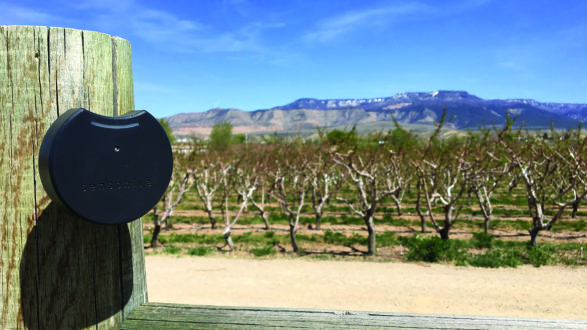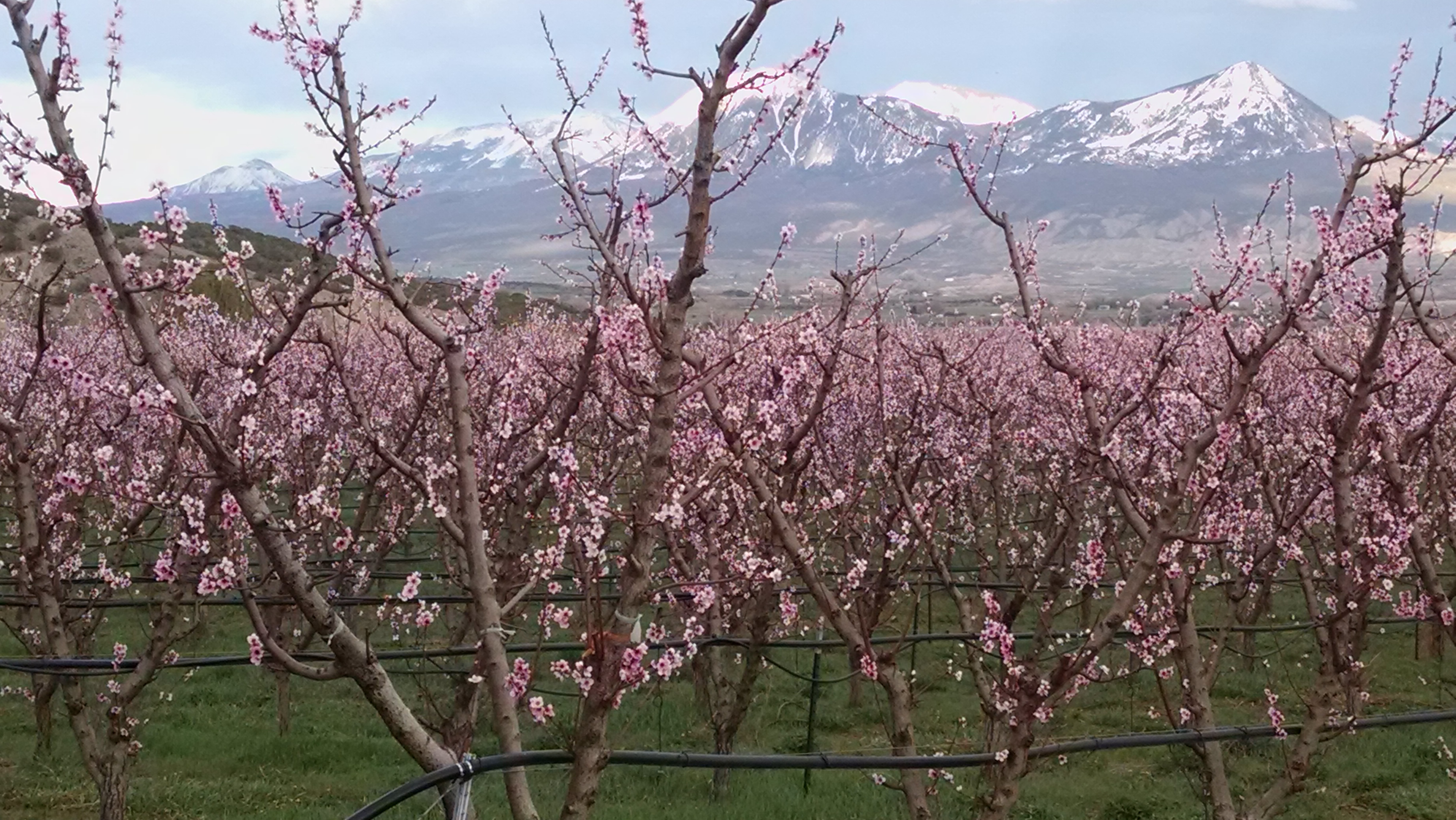

Sep 7, 2018Rocky Mountain growers try remote sensors
During a late-season frost in 2017, western Colorado grower Edward Tuft used a mobile app and a network of remote thermometers to save a crop of Honeycrisp.
Tuft, the founder of Leroux Creek Foods, was able to preserve a crop worth hundreds of thousands of dollars by activating his heating and fan systems in a timely manner.
That story caught the attention of his colleagues in the region, and it’s largely the reason the Rocky Mountain Farmers Union this season embarked on a pilot program with ag tech company Smart Yields.
The Rocky Mountain Farmers Union (RMFU) is a membership-based group representing more than 22,000 family farmers and ranchers in Wyoming, Colorado and New Mexico. The group engages in advocacy, runs an educational and charitable foundation, in addition to offering insurance products – so piloting a new product is a different step for the group.
“We don’t often get into the tech space,” said Harrison Topp, RMFU membership director and an owner/ operator at the family farm, Topp Fruits, which also grows peaches, plums, cherries and apples.


The fruit growers at RMFU were interested – 16 of them participated in the field program this year.
“It really resonated with our mission,” Topp said.
Colorado orchards are often located at the mouth or tail end of a canyon in order to take advantage of the airflow. Fruit growers in the region are known by Topp to sleep in pickup trucks or take other extreme efforts in order to closely monitor frosts.
“Staying up all night to watch your wind machines was kind of a fact of life,” Topp said. “I don’t think people recognize we had a gap there.”
Growers in the pilot program have paid which gathers data from remote sensors, in what the tech industry calls an internet of things, or IoT, format. Smart Yields uses hundreds of Sensohive remote temperature monitoring devices linked by low-power, long-range Sigfox wireless networks. Smart Yields alerts the growers via SMS text messages when temperatures dip dangerously low for the orchard’s elevation, and also offers forecasts and weather alerts.
Tuft said he’s not only able to avoid catastrophic frosts but also is able to more efficiently heat his orchards, which can cost as much as $500 to heat through frost season.


So far, the pilot program has been easy to navigate, Topp said. A few wrinkles have been ironed out: Not all frosts detected by the system affected all growers in the group. Now growers get updates only from the sensors they choose as relevant to their own farms.
The heaters and wind machines are not on the network and still need to be manually operated.
“The challenge is this is monitoring – a reading of 17 degrees is a reading of 17 degrees – without the tools to act on it,” Topp said.
The group is looking at adding other hardware to its network in the future, such as ground moisture sensors.
“It might never come to pass that there’s some sort of silver bullet solution,” Topp said. But “one thing this has made us start thinking about is, what other ways can we understand the cold?”
Already, the growers are learning about the nuances of their orchards, some of which show as much as 6˚ F difference from one side to the other, and “we’re definitely seeing our microclimates more accurately.”
The pilot program in Colorado is a significant development for Smart Yields, as well. Vincent Kimura, CEO of Smart Yields, said the partnership is the company’s largest to date, bringing together farmers, growers and ranchers from across the state together to share data. Smart Yields typically works with groups of small- and medium-size farmers, land managers, and landowners, and has typically worked with coffee growers and even tea growers on other continents.
“Farmers are the humblest people, globally, that I’ve ever met,” Kimura said. He finds growers to be open to improving their tools for gathering information, on one occasion telling him, “Look, we don’t know what we don’t know.”
Smart Yields and RMFU members meet regularly with participants to test and deploy technology, gather feedback, and explore additional sectors where these systems may serve a critical role, such as pest monitoring.
Topp, for one, is excited to be breaking new ground in the pilot program.
“It’s really exciting and it’s really unlike anything else I’ve come across,” Topp said.
– Stephen Kloosterman, FGN Associate Editor
Top: A Senohive sensor is located next to an orchard in the Rockies. Photo: Smart Yields.














